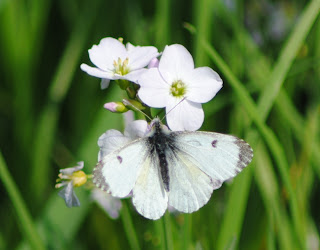This blog may help people explore some of the 'hidden' issues involved in certain media treatments of environmental and scientific issues. Using personal digital images, it's also intended to emphasise seasonal (and other) changes in natural history of the Swansea (South Wales) area. The material should help participants in field-based modules and people generally interested in the natural world. The views are wholly those of the author.
Friday, 29 April 2011
Seeing the Changes 382
In Loughor, the Honeysuckle (Lonicera periclymenum) and Pedunculate oak (Quercus robur) were coming into flower. It was also fairly obvious that strands of Japanese knotweed (Reynoutria japonica) had been treated with a powerful herbicide. It was, however, still coming through. Spotted Yellow dungflies (Scatophaga stercoraria) and Hoverflies (Volucella zonaria and Chrysotoxum cautum). Also saw female Orange-tip butterfly (Anthocharis cardamines) feeding and a Speckled wood (Pararge aegeria tircis) basking. Beetles were celibrating the Royal wedding. There were mating Phyllobis pomaceus on nettles and Gastrophysa viridula on docks. Pyrochroa serraticornis was more restrained.
Subscribe to:
Post Comments (Atom)
-
I n the UK and US, a pparently popular and successful vegan/vegetarian restaurants are reportedly closing or adding meat to their menus ( ...
-
Early ripening fruit may seem convenient but some folk think it confirms environmental stress. There's also a possibility th...













%20mating%20NWCW.jpg)


No comments:
Post a Comment